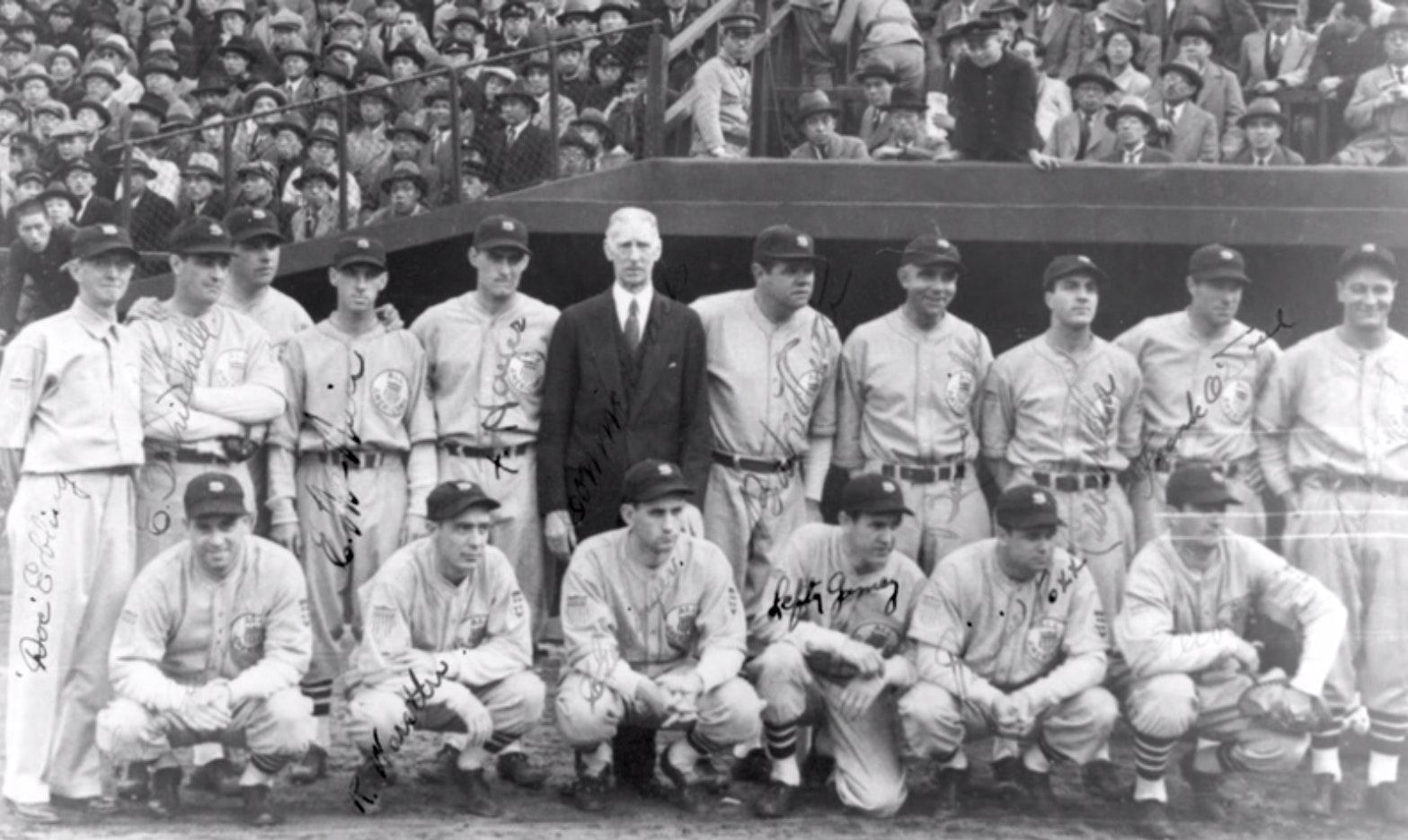1934 Tour of Japan
By PJ Shelley, Tour and Programming Director
With the 2017 World Baseball Classic in full swing, the baseball world reflects and celebrates how global the sport has become. This is the tournament that introduced me and many American baseball fans to Yu Darvish, Aroldis Chapman, Daisuke Matsuzaka, and Yoenis Cespedes, just to name a few.
It’s easy to forget that baseball was not always this global. Despite the “World Series” being introduced in 1903, MLB’s “world” was restricted to the Northeast and Midwest United States. Even into the 1950s, St. Louis and Washington, D.C., were home to MLB’s westernmost and southernmost teams.
Despite MLB’s geographic limitations, the spread of the game itself could not be held back by borders or oceans. Baseball was introduced to Japan in the 1870s, and starting in 1908 American professional players had toured The Land of the Rising Sun several times to promote the game. But it was 1934’s tour of Japan that stood out the most. Not only was this roster stacked with All-Stars like Lou Gehrig, Jimmy Foxx, Lefty Gomez, and Charlie Gehringer, it had the game’s biggest star: Babe Ruth.

The All-Stars, skippered by Connie Mack, took on Japan’s best players through 12 cities and 18 games. Despite how thoroughly Mack’s sluggers routed their competition, winning all 18 games, Japanese fans by the thousands cheered on. Even the aging Ruth did not disappoint. The 39-year-old Sultan of Swat used his R43 Louisville Slugger to wallop 13 home runs, or ホームラン, to the delight of the fans.
Two members of the 1934 traveling team worth noting were a 32-year-old backup catcher with a love of languages from Newark, New Jersey, and a 67-year-old bat maker from Louisville, Kentucky. Moe Berg and Bud Hillerich were part of that tour.
Moe Berg was an eccentric ballplayer. While playing college ball at Princeton, he communicated with his fellow infielders in Latin to confound opposing base runners. He spoke ten languages, but his Washington Senators teammate, Dave Harris, said, “He can’t hit in any of them.”
Berg split the ’34 season between Washington and Cleveland in the backup backstop role. And while his Jersey accent couldn’t help him hit a Lefty Gomez fastball, it was his ability to speak Japanese that earned him a ticket to travel with the other star players. While in Japan, he secretly filmed the Tokyo skyline from the roof of a hospital that was one of the tallest buildings in the area. After his playing days when World War II broke out, Berg’s multilingual and stealthy skills came in handy once more. He served as a spy for the US government, traveling Europe while gathering intelligence about Germany.
Hand turning the first Louisville Slugger baseball bat in 1884, Bud Hillerich had been crafting bats for the game’s greatest for 50 years by 1934. After hand turning World Series bats for players like Hank Greenberg, Frankie Frisch, and Ducky Medwick, to wrap up the season, I suppose Bud had earned a vacation. He was lucky enough to bring his family with the traveling stars to Japan. Lounging on the deck of The RSS Empress Japan while rubbing elbows with Babe Ruth, Lou Gehrig, and future spies sounds like a good time to me. I wonder if any of the star players broke their supply of bats, forcing Bud’s wood turning prowess into service while vacationing with his famous customers.

(Hillerich Family Cruise. Bud Hillerich poses with family, Lefty O'Doul, and Babe Ruth on one of their family cruises.
On the deck of the Indraporea. Taken 1934-1935. source: H&B archives)
Baseball passion continues to spread around the world. While we routinely welcome guests to our museum from Japan, Korea, Latin America, and other parts of the world that are baseball mad, I’m always thrilled to welcome guests where baseball is just taking hold. One of our Guest Service Team Leaders is fluent in German, Swedish, and Italian and it seems like every week, she’s utilizing her skills to communicate with our international visitors. One tagline for the World Baseball Classic is, “Baseball Spoken Here.” I couldn’t agree more. They were speaking it in Japan in 1934. We’re speaking it in Louisville 363 days a year at 800 West Main Street.
